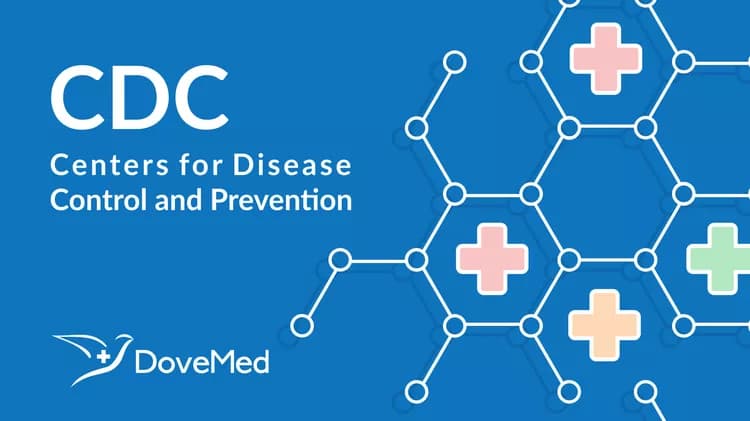
U.S. Invasive Cancer Rates Slightly Down From 2009 To 2010
U.S. invasive cancer rates slightly down from 2009 to 2010
Preventive services like HPV vaccination and colorectal cancer screening are important tools in reducing cancer rates
New Cancer cases per 100,000
Rates of invasive cancer cases among U.S. men and women dropped slightly from 459 per 100,000 persons in 2009 to 446 per 100,000 persons in 2010, according to a study by the Centers for Disease Control and Prevention. The highest rates were for prostate, female breast, lung and bronchus, and colon and rectum cancers, which together accounted for half of all cancer cases in the United States. With the exception of urinary bladder cancer, invasive cancer is defined as cancer that has spread to surrounding normal tissue from where it began.
For the first time, lung cancer was the second most common cancer among Hispanic men, surpassing colorectal cancer. Rates of new cancer cases were higher among men than women, highest among blacks, and ranged by state.
Differences in rates of new cancer cases reflect differences in cancer risk factors. Evidence-based interventions to reduce these differences can be enhanced through policy approaches. For instance, the Affordable Care Act encourages patients to get appropriate and timely preventive cancer services by reducing or eliminating cost-sharing expenses. These services include help with quitting tobacco use, certain cancer screenings, and vaccination against HPV (human papillomavirus), which is known to cause cancer.
“The good news is that we are seeing slightly lower cancer rates in 2010 than in 2009,” said David Espey, M.D., acting director, CDC’s Division of Cancer Prevention and Control. “However, far too many people are disabled and die from preventable cancers. It’s important to continue to offer the cancer preventive services that we know works to reduce cancer rates and save lives.”
Researchers analyzed new cases of invasive cancers diagnosed in 2010 and reported to CDC’s National Program of Cancer Registries and the National Cancer Institute’s (NCI) Surveillance, Epidemiology and Results Program (SEER). Data from all states (except Arkansas and Minnesota) and the District of Columbia were included in the analysis that covered 97 percent of the U.S. population.
pdf icon
[PDF]
Preventive Services are important tools in reducing cancer rates.
Entire Graphic
pdf icon
Key Findings:
Rates of new cancer cases are presented in parentheses where appropriate and are per 100,000 persons.
The annual rate for all cancers diagnosed in 2010 was 446 compared to 459 in 2009.
In 2010, there were 745,383 cases of invasive cancers reported among men and 711,113 cases among women.
Rates were higher among men (503) than women (405), and highest among blacks (455).
The highest rates were for cancers of the prostate (126), female breast (119), lung and bronchus (62) and colon and rectum (40).
The top 10 cancer sites differed by sex and racial and ethnic group. Among men, prostate, lung, and colorectal cancers were the first, second, and third most common cancers in all racial and ethnic groups.
Among women, breast cancer was the most common cancer among all racial and ethnic groups, followed by lung, colorectal, and uterine cancers.
Among Hispanic women, colorectal cancer was more common than lung cancer.
Among Asian/Pacific Islander women, the most common cancers were colorectal, lung, and thyroid.
By state, rates for all cancer sites ranged from 380 (Arizona) to 511 (Kentucky).
Healthy People 2020 objectives were met in 15 states for declining colorectal cancer incidence (compared with seven states in 2009) and in 24 states for reduced cervical cancer incidence (compared with 19 states in 2009).
The 2014 Surgeon General’s Report concluded that smoking can cause cancer almost anywhere in the body. Nearly all lung cancer—the number-one cancer killer of both men and women—is caused by smoking. For information on quitting smoking and preventing tobacco use, visit www.cdc.gov/tobacco/campaign/tips/ and www.betobaccofree.gov.
This year more than 50 organizations have pledged to focus their efforts on dramatically increasing the U.S. colorectal cancer screening rates and increasing awareness of the potential for early detection and prevention of this cancer. The goal is to reach 80 percent of adults aged 50 and older to get screened by 2018.
One of CDC’s top priorities for 2014 is increasing HPV vaccination among preteens and teens so that the next generation is protected against deadly cancers. For more information about how the HPV vaccination prevents cancer, visit www.cdc.gov/hpv.
Through the Affordable Care Act, more Americans will qualify to get health care coverage that fits their needs and budget, including important preventive services such as tobacco use screenings and tobacco cessation services that may be covered with no additional costs. Visit Healthcare.gov or call 1-800-318-2596 (TTY/TDD 1-855-889-4325) to learn more. Open enrollment in the Marketplace ends March 31, 2014.
For more information about the report, visit www.cdc.gov/mmwr. For information about CDC’s efforts in cancer prevention and control, visit www.cdc.gov/cancer.
###
U.S. DEPARTMENT OF HEALTH AND HUMAN SERVICES
Related Articles
Test Your Knowledge
Asked by users
Related Centers
Related Specialties
Related Physicians
Related Procedures
Related Resources
Join DoveHubs
and connect with fellow professionals

0 Comments
Please log in to post a comment.